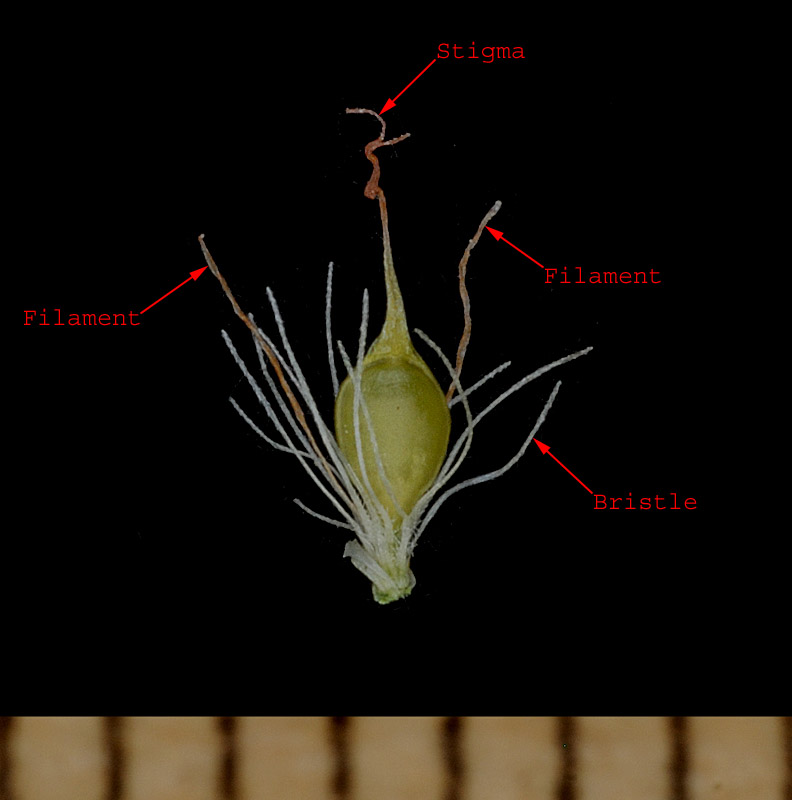
White Beak-Rush
Rhynchospora alba

White Beak-Rush
Bristles, Filaments, and Achene
Greenbush Bog, 20 km West of Hudson Bay, SK on Highway #3
28-July-2016
According to the Flora of North America, there are 10 to 12 bristles. This specimen appears to have 13. Note the two filaments and the two stigmas.
|
Alba: Answers to key questions in Rushes, Bulrushes & Pondweeds plus the remaining Monocots of Saskatchewan by V. L. Harms, A. L. Leighton, and M. A. Vetter leading to this species. The answers are in the order you would normally work through the key.
| |||||||||||
|
Rhynchospora: Answers to key questions in Rushes, Bulrushes & Pondweeds plus the remaining Monocots of Saskatchewan by V. L. Harms, A. L. Leighton, and M. A. Vetter leading to this genus. The answers are in the order you would normally work through the key.
|
|
Cyperaceae: Answers to key questions in Budd's Flora leading to this family.
|